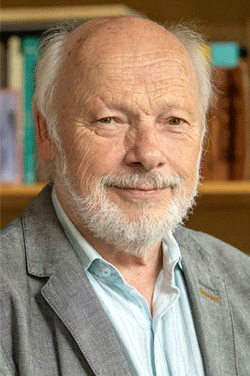 nuclear physicist and astrophysicist
nuclear physicist and astrophysicist
Michael C. F. Wiescher, a renowned German-American experimental nuclear physicist and astrophysicist, is recognized for his groundbreaking work on the intersection of nuclear physics and astrophysics. His research has provided valuable insights into phenomena such as stellar evolution and explosive cosmic environments.
Wiescher’s academic foundation was established in Bavaria, where he completed his Abitur in 1969 at Gymnasium Münchberg. He pursued higher education at the University of Münster, earning a Vordiplom in physics in 1972, followed by a Diplom in solid-state physics in 1975. He later achieved his doctorate in nuclear physics in 1980, graduating summa cum laude. His dissertation, titled Measurement of the Reactions in the CNO Cycles, was supervised by Claus Rolfs.
His postdoctoral career included significant appointments at several prestigious institutions. From 1980 to 1983, he worked at Ohio State University, followed by a period from 1983 to 1985 at the University of Mainz under the supervision of Karl-Ludwig Kratz. He then joined Caltech’s Kellogg Radiation Laboratory, collaborating with Willy Fowler and Charlie Barnes from 1985 to 1986.
Wiescher began his tenure at the University of Notre Dame in 1986, where he became an assistant professor. Progressing through the ranks, he was promoted to associate professor in 1990 and full professor in 1993. By 1998, he was appointed as the Freimann Professor of Physics. From 2003 to 2015, he served as director of the Joint Institute for Nuclear Astrophysics (JINA), a collaborative initiative involving the University of Notre Dame, Michigan State University, and the University of Chicago. Additionally, he holds adjunct faculty positions at Michigan State University and the University of Surrey. Over the years, Wiescher also took on visiting faculty roles at esteemed institutions such as the University of Frankfurt, the University of Edinburgh, and the GSI Helmholtz Center in Darmstadt, Germany.
Wiescher’s expertise spans various fields, including nuclear astrophysics, low-energy experimental physics, reaction physics involving stable and radioactive beams, and the scientific analysis of cultural heritage artifacts. He has shared his knowledge widely, serving on the editorial board of Physical Review C and as an associate editor for Nuclear Physics A.
An accomplished author, Wiescher has contributed to over 500 research publications focusing on nuclear physics, astrophysics, and the history of science. He has also penned works on local history, a biography of Arthur E. Haas, and the two-volume textbook Radioaktivität Ursprung und Auswirkungen eines Naturphänomens. Along with Khachatur Manukyan, he co-authored the textbook Scientific Analysis of Cultural Heritage Objects. His dedication to public engagement is evident in the more than 200 presentations he has delivered at universities, research institutions, and conferences worldwide. Notably, at the 2021 Fall Meeting of the APS Division of Nuclear Physics, Wiescher and Manukyan presented research that utilized X-rays, electron microscopy, and accelerators to study historical coins and paper currency.
Wiescher’s achievements have earned him widespread recognition. He was elected a fellow of the American Physical Society in 1998, a fellow of the American Association for the Advancement of Science in 2009, and a foreign member of Academia Europaea in 2017. His prestigious awards include the 2003 Hans A. Bethe Prize from the APS, the 2007 Humboldt Prize from the Alexander von Humboldt Foundation, and the 2018 Laboratory Astrophysics Prize from the American Astronomical Society.
Michael Wiescher stands as a leading figure in experimental nuclear physics and astrophysics, with a career that has significantly advanced our understanding of the universe while bridging science, education, and cultural heritage.